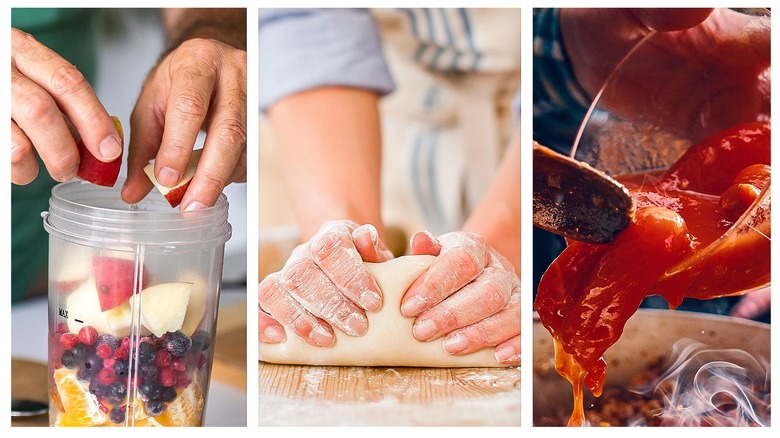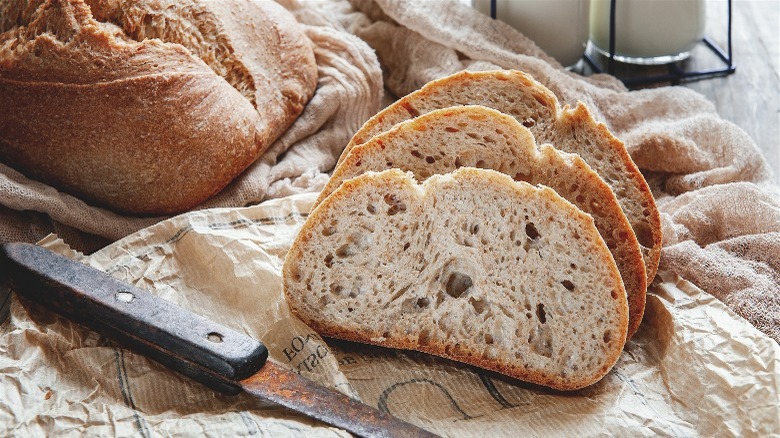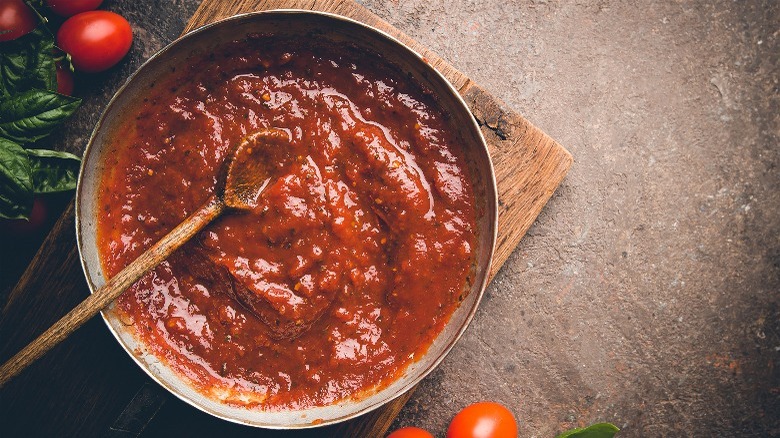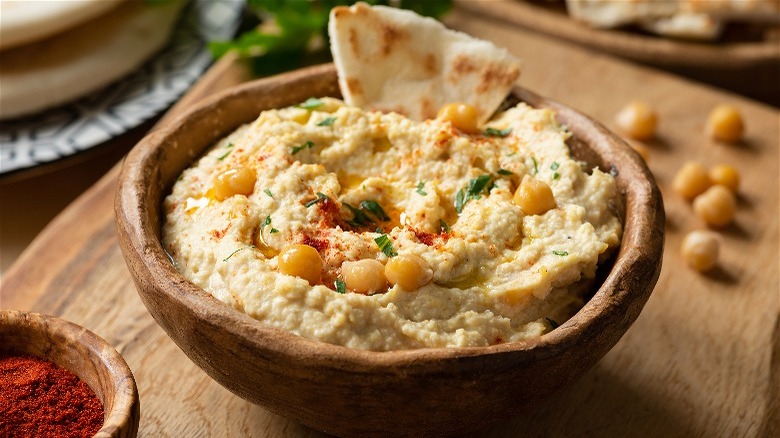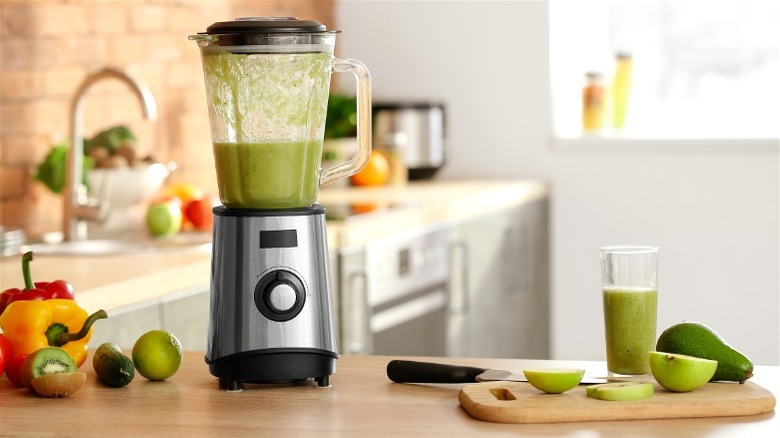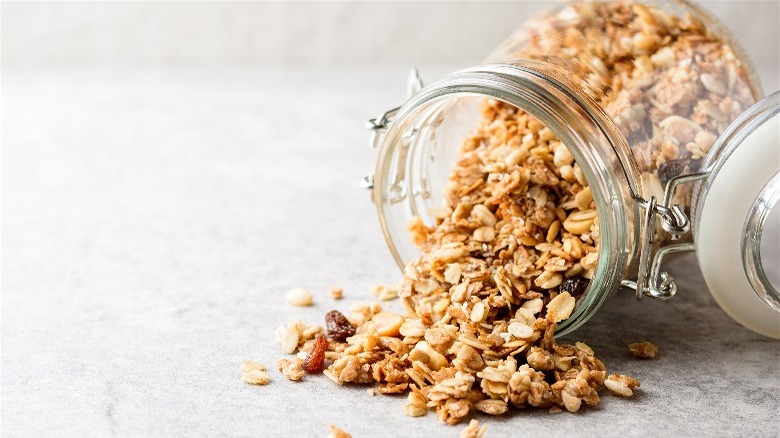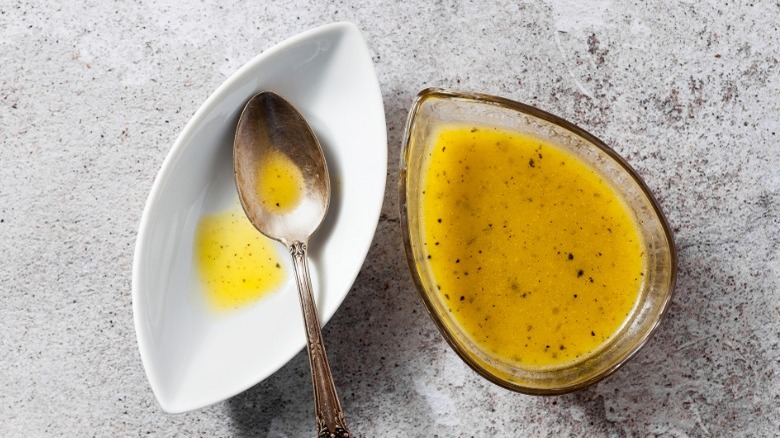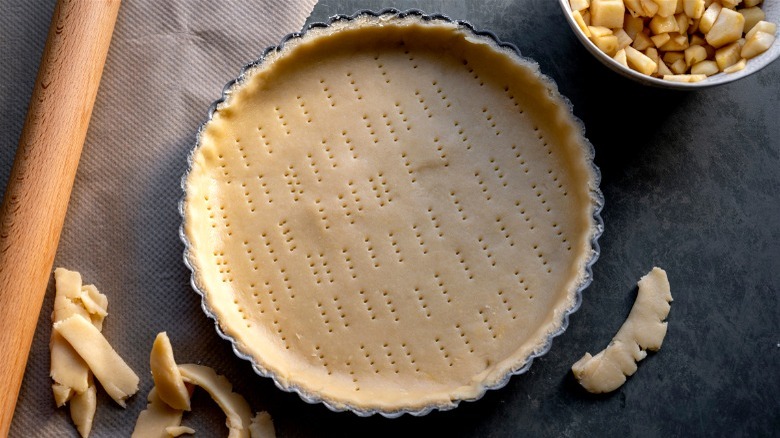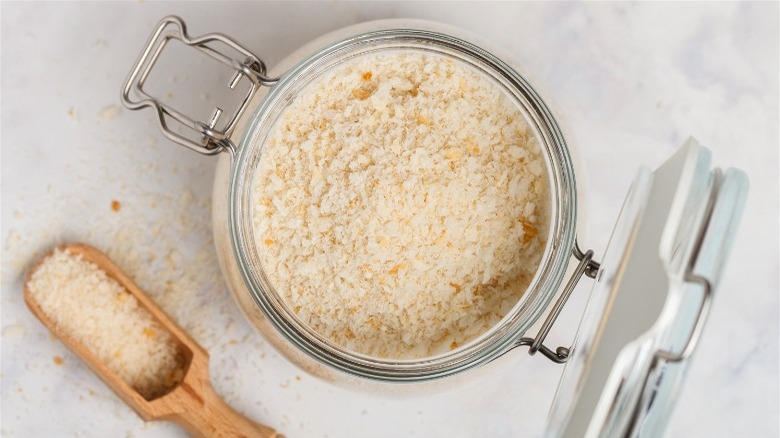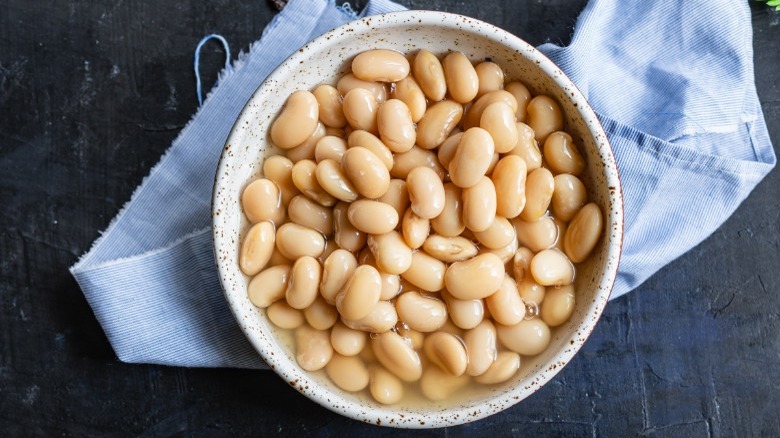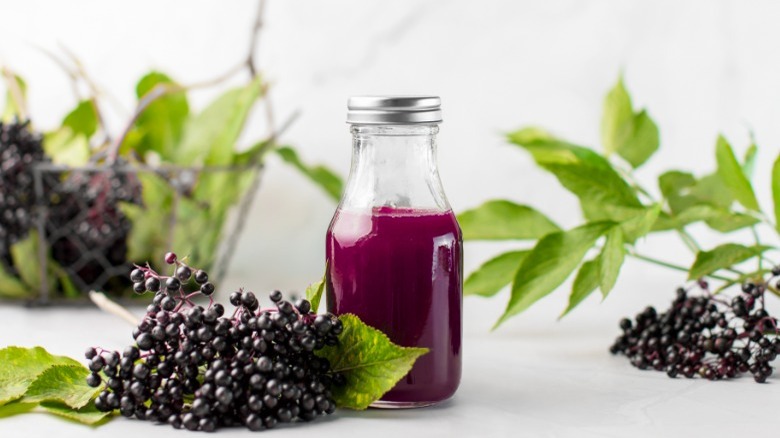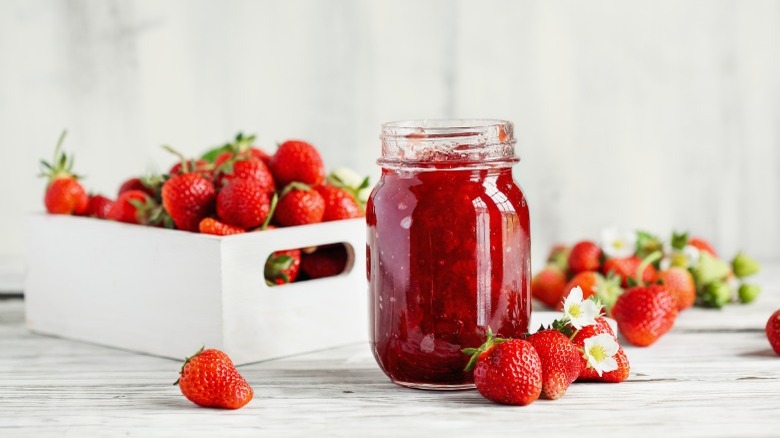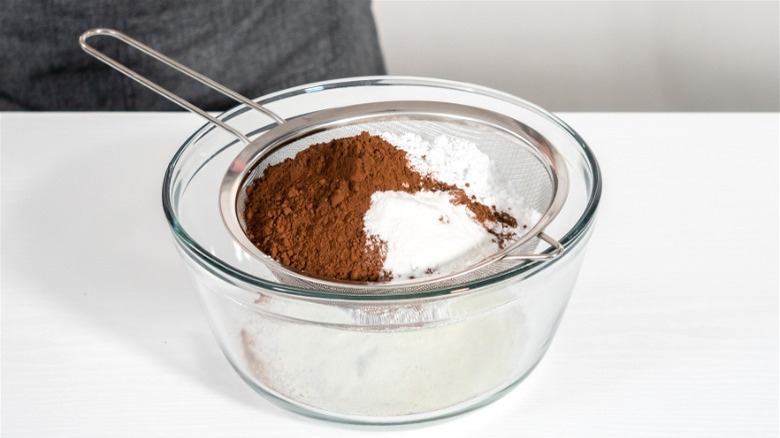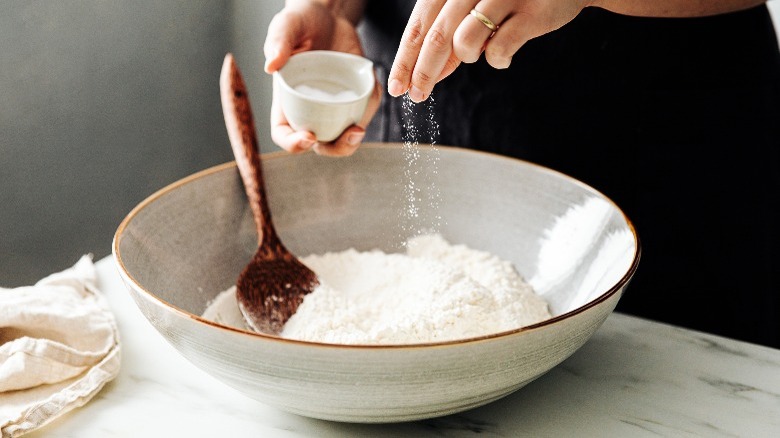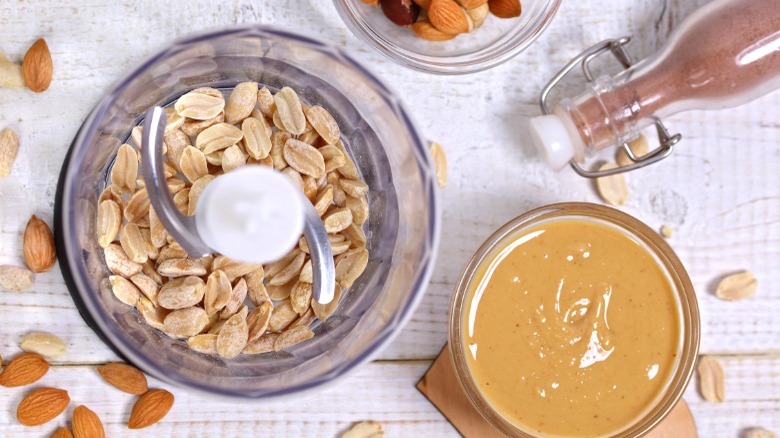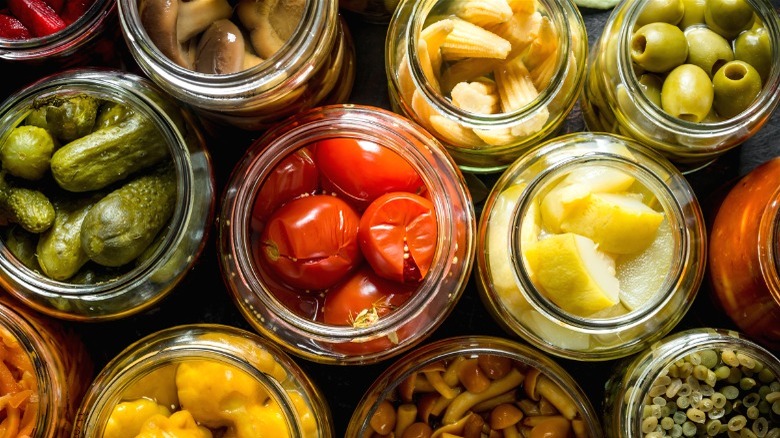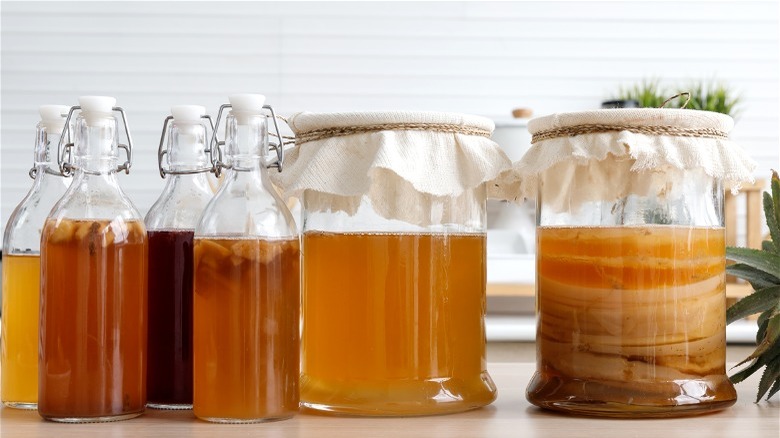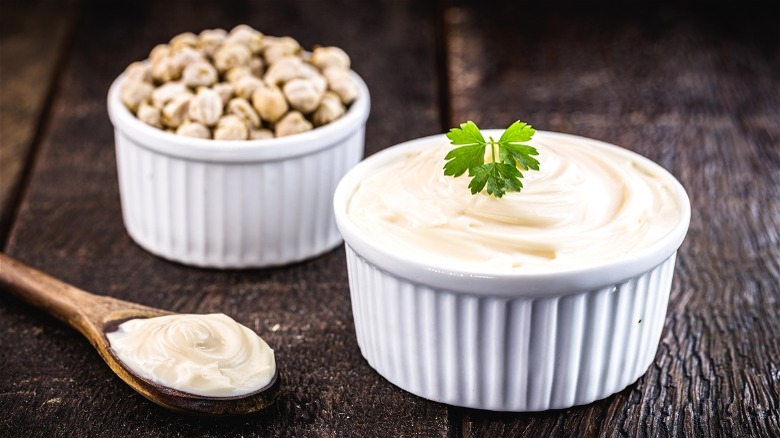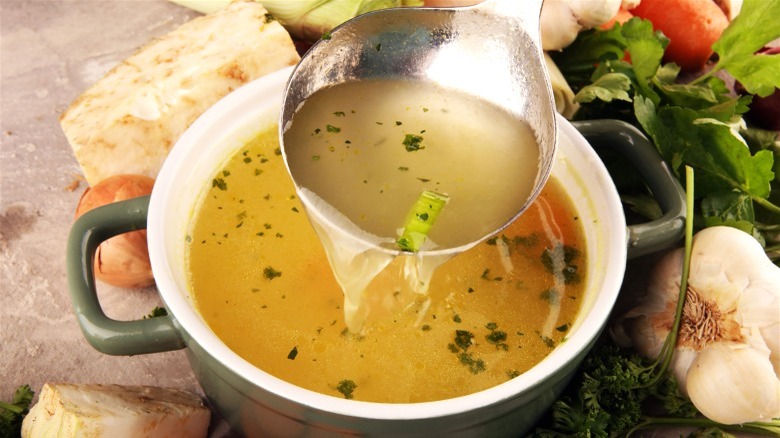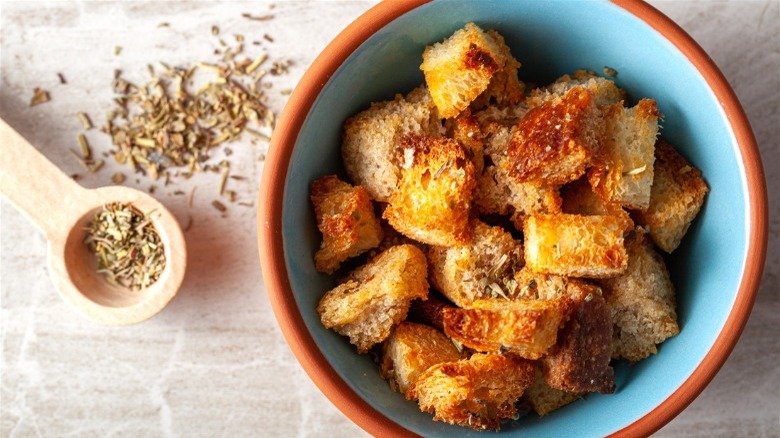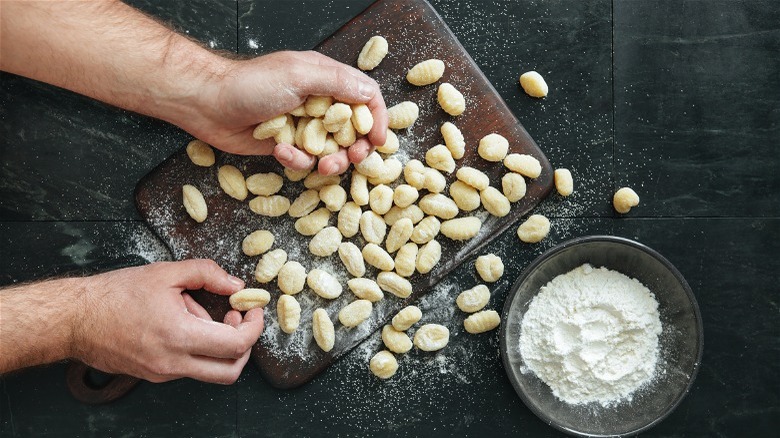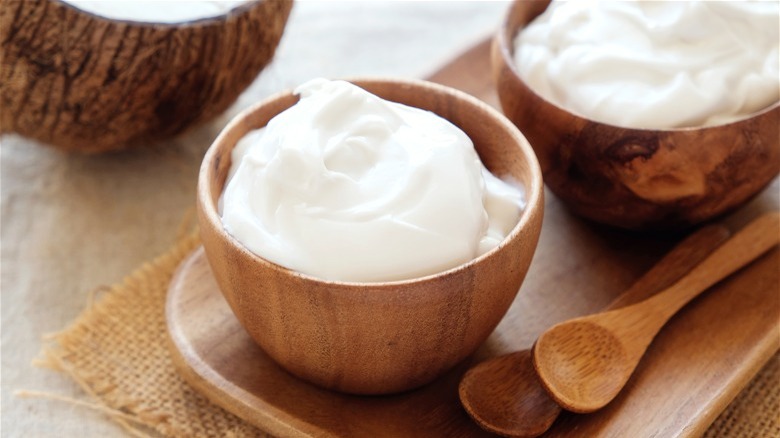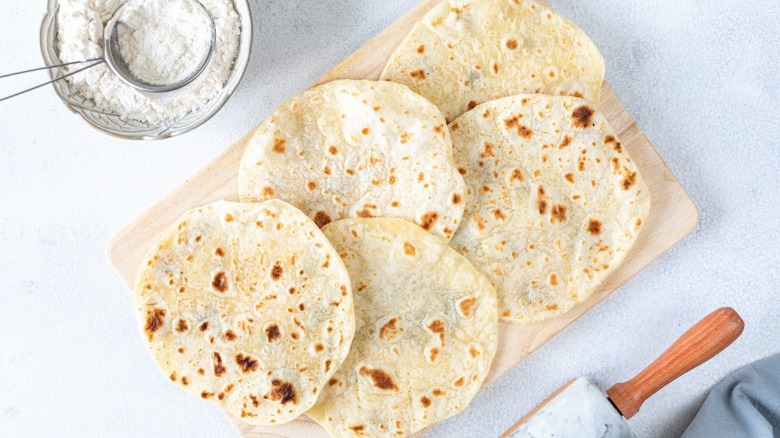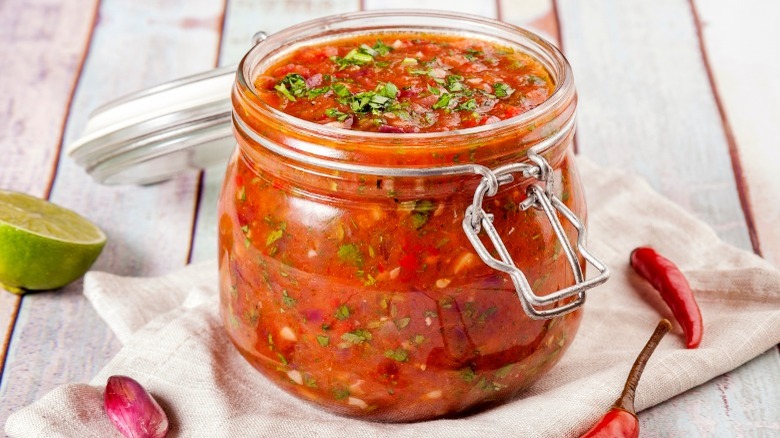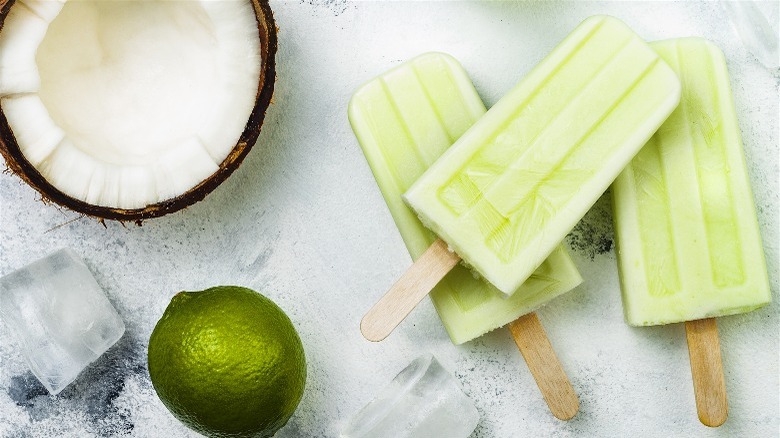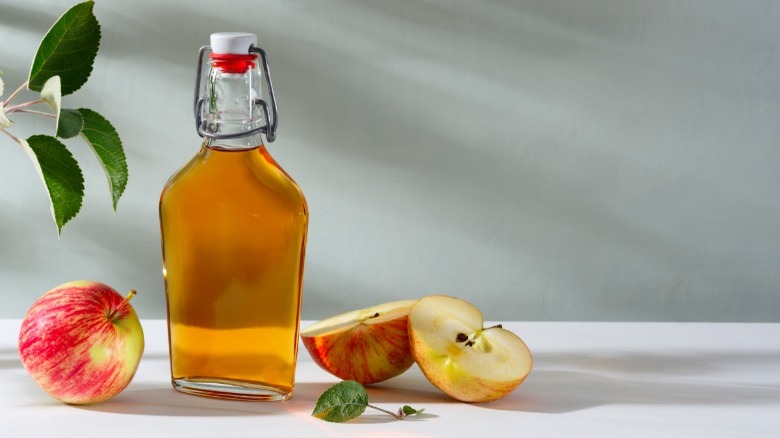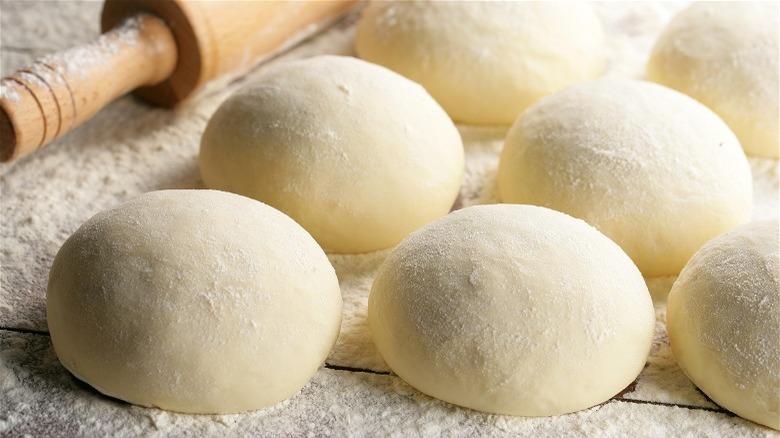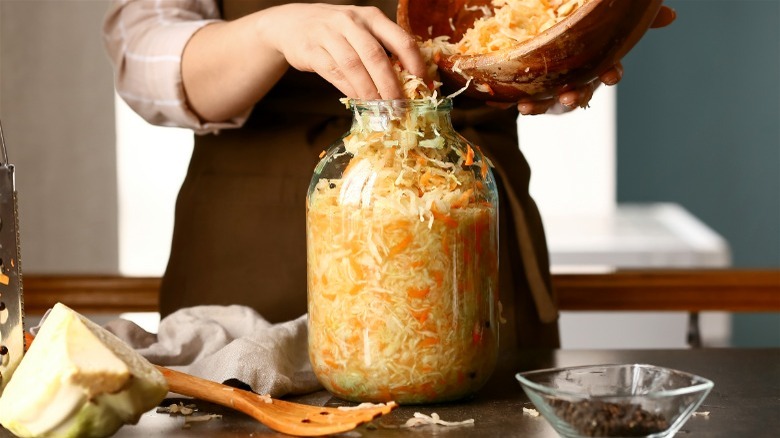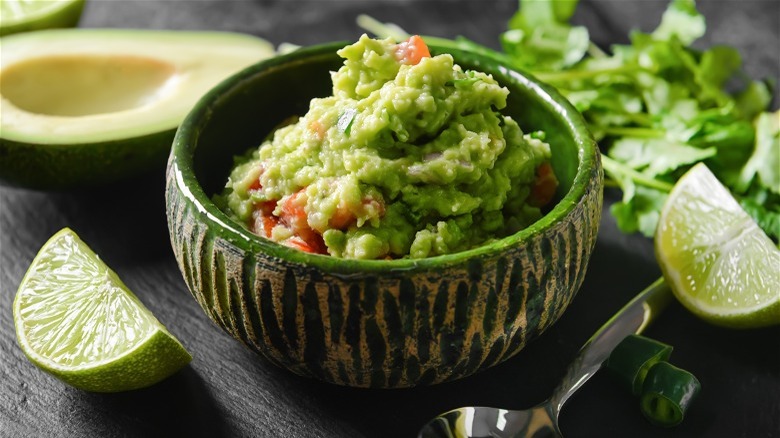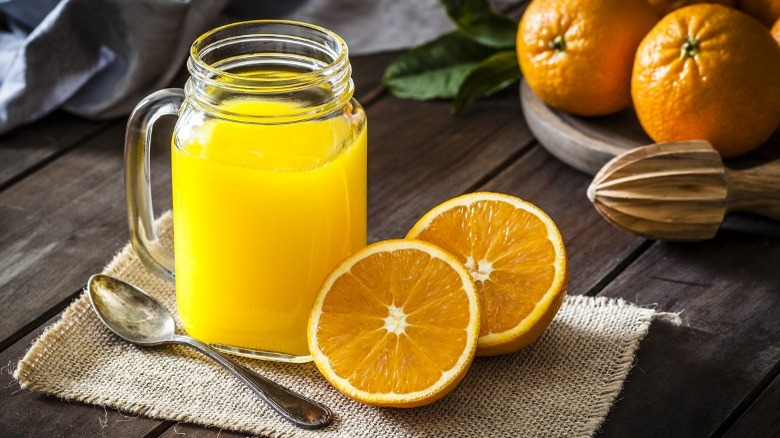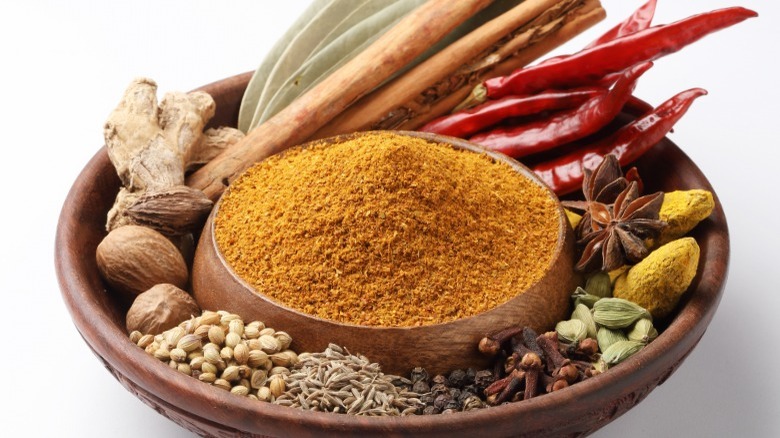31 Foods You Should Be Making From Scratch
While everyone's priorities vary, it's safe to suggest that preparing staples from scratch rather than succumbing to the allure of processed alternatives is a superior choice. For one, homemade goods offer a certain comfort and greater flavor that comes from clean, familiar ingredients. Thrifty cooks can save money by buying beans in bulk and repurposing overripe fruit or vegetable scraps. The adventurous flavor seekers can customize their seasoning mixes and snacks and fill their pantry with homemade preserves. If health is your priority, you can nurture gut health with unpasteurized fermented goodies. Finally, environmentally-minded folks can reduce packaging waste by crafting their own drinks and vegan yogurts.
The only costly resource required for all these artisanal delights is time, but once you've savored freshly hand-crafted goodies, we guarantee you'll want to create more space in your schedule for making them — for your health, your wallet, and the planet.
1. Bread
Remember the great breadmaking renaissance of 2020? What began as a quirky pursuit to quell quarantine-induced ennui remains a skill worth mastering. Sinking your teeth into a warm, crusty loaf of homemade bread is a surefire way to never return to factory-produced fare. As you experiment with various bread recipes, you'll find your prowess improving, your understanding of the process growing, and your ability to produce high-quality, affordable, and customizable loaves from simple ingredients increasing. And if you're into sourdough, skip the pricey kits — growing your starter from scratch couldn't be easier.
2. Pasta sauce
While making your own marinara will take longer than dumping a store-bought jar into the pan, we suggest you embrace the satisfaction of a homemade sauce devoid of excessive sodium, oil, or preservatives, tailored to your specific taste and dietary preferences. It might even be cheaper when tomatoes are in season! This saucy endeavor grants you the reins of control, allowing you to capitalize on flavor and concoct a meal that's not only brag-worthy but also a true reflection of your individuality. Just sidestep those common spaghetti sauce mistakes, and you'll be on the path to pasta perfection.
3. Hummus
In a world where climate change and military conflicts drive up the price of chickpeas and, consequently, make hummus more expensive, it's worth considering going homemade. Cost-effective dried chickpeas and a powerful blender can help you achieve that silky texture of store-bought hummus.
And while you'll have to buy tahini to make simple creamy hummus, that's actually a good thing, as this ingredient is incredibly versatile and worth having on hand (especially for vegans). The true beauty of homemade hummus lies in the freedom to customize flavors, incorporating anything from smoked paprika to (apologies to hummus purists) cacao.
4. Smoothies
The convenience of store-bought smoothies may be alluring, but it's a poor trade-off for the nutritional benefits of crafting your own. A powerful blender is a worthwhile investment that unlocks a world of fresh, creamy drinks free of added sugar and artificial coloring. Homemade smoothies give you the freedom to experiment with seasonal fruits, vegetables, and superfoods, ensuring nutrient retention and flavor tailored to your preferences that off-the-shelf alternatives can't match. Moreover, by making them yourself, you'll be saving the environment from unnecessary packaging waste. Follow our perfect smoothie-making tips, and you'll bid farewell to buying them for good.
5. Granola
There are plenty of reasons why you should be making your own granola — from skipping on multiple (and often questionable) sources of sugar involved in the production of the commercial varieties to saving money (you can go as simple or as fancy with the add-ons, but raw oats are always going to make a cheap base). Furthermore, making your own crunchy granola is often as easy as dumping all the ingredients into one bowl, mixing well, then baking for 35-40 minutes. Yes, it takes longer, but the flavor of freshly baked granola is always going to be superior.
6. Salad dressing
Mastering the art of an all-purpose vinaigrette is essential for any self-respecting home cook. The golden ratio you should aim for is three parts oil to one part vinegar. If you end up with an overly acidic salad dressing, there's an easy fix: Balance it out with a touch more oil, tahini, avocado, or another fatty ingredient.
While store-bought dressings boast a longer shelf life, they're also more expensive. Homemade versions offer the advantage of being crafted in just the right quantity from pantry-friendly ingredients, ensuring you'll savor every last drop before it even reaches its expiration date.
7. Pie crust
Nothing beats the comfort of a homemade pie, especially one made from scratch — and yes, that means both the filling and the flaky crust. When you go homemade, you gain full control over what goes into your creation, sidestepping unwanted additives like palm oil or excess sodium. Despite the delicate touch required, even a gluten-free pie crust comes together in minutes; although it requires some fridge time, so do its commercial counterparts. Best of all, it is absolutely okay to freeze homemade crusts, granting you the luxury of indulging in a scrumptious pie whenever the craving strikes.
8. Breadcrumbs
Stale bread is undoubtedly one of the foods you need to stop throwing out. If it's a couple of days past its prime, it's a great French toast or bread pudding base. But if it went full rock on you, it's time to turn your stale bread into breadcrumbs. You don't even need fancy equipment: if you own a box grater, use the freeze-and-grate method and never pay for breadcrumbs again. Once you have them ready, the possibilities are endless. For example, toast them with Calabrian chiles and sprinkle them on top of spaghetti aglio e olio.
9. Beans
Beans are one of the healthiest and most affordable protein sources, especially if you buy them dry in bulk. Cooking beans from scratch, while time-consuming, requires no skill or effort: Soak them for a few hours, then boil them for a couple more (pro tip: a sprinkle of baking soda can save you hours of cooking time).
Homemade beans will have a better texture and flavor, which you can adjust to your preference. Another benefit is that you can reserve the leftover cooking liquid, known as aquafaba, and turn it into a number of vegan delights.
10. Syrup
Delving into the art of syrup-making allows you to craft unique flavor blends, such as orgeat almond or honey elderberry, that won't easily be found on store shelves. For those who fear the dreaded burnt sugar, our no heat, no fuss simple syrup recipe lets time do its magic, sans burning risks.
While they have a shorter shelf-life, homemade syrups boast higher-quality ingredients and can be made in any batch size to suit your needs, meaning you can make precisely what you can consume. Additionally, reusing glass bottles from other beverages eliminates paying for excess packaging and creating waste.
11. Fruit preserves
Once you start making your own jams, jellies, and other kinds of fruit preserves, you'll realize that the convenience of store-bought jars is their sole advantage, as the flavor and price point of home preserves are unparalleled.
Homemade jams don't need to be overly complicated — you want the fruit's natural flavor to shine through, although you can let your creativity run free. Take advantage of local, seasonal, ripe produce, and you'll have something delicious in your pantry to satisfy your sweet tooth year-round without having to pay extra for ingredients you don't trust.
12. Hot cocoa mix
While hot cocoa and hot chocolate are often confused with each other, the former usually comes in the form of a powdered mix which is easy to recreate at home. From an ethical standpoint, a homemade mix is better because you can use organic, Fair Trade-Certified cocoa powder and sugar and avoid dried milk powder or animal-derived vitamins. You can skip any unwanted components and go for the classic trio of cocoa, sugar, and salt, which are enough for a comforting, chocolatey drink.
13. Self-raising flour
If you're an enthusiastic baking novice, you might've noticed that some recipes call for self-raising flour. This ingredient seems to miraculously help the dough rise without extra leavening agents. However, there's no magic involved: it's a simple mix of flour, baking powder, and salt. And since any amount of food processing amounts to added costs, when buying self-raising flour, you're essentially paying extra for something you can easily make yourself. Follow Jamie Oliver's advice and sift two teaspoons of baking powder into each cup of flour, and you're good to go.
14. Nut butter
Any nut butter lover knows that it can be an expensive habit. And while some store-bought brands might appear cheaper per ounce than homemade, that's typically due to lower quality source material and "filler" ingredients such as oils and sugar, which will be absent from your own concoctions. Homemade cashew butter, for instance, requires only two ingredients: raw cashews and salt. You'll also need a powerful blender or food processor — a costly but versatile appliance that will help you make peanut butter at home in no time (as well as countless other goodies, from smoothies to sorbets).
15. Pickles
While store-bought pickles can be the same price or cheaper than homemade preserves, they certainly lose the freshness and flavor competition. Fortunately for pickle fiends, making your own couldn't be easier — especially when you have access to high-quality seasonal produce.
There's a whole genre of novice-friendly refrigerator pickles that don't require heat or sterilization: they are ready to enjoy in 24 hours and will last a couple of weeks. But if you're serious about getting into the long-term pickling game, follow our tips for making homemade canned pickles to carefully preserve summer flavors for year-long consumption.
16. Kombucha
While fermentation is an ancient art, it's been having a moment in recent years. Suddenly, everyone started making their own kimchi, sourdough bread, and, of course, kombucha. And for a good reason — a home-brewed kombucha is easy and inexpensive to make from a handful of ingredients.
However, for fruitful drink-making, you should follow a few rules. For instance, avoid using herbal teas when making kombucha because they lack the necessary compounds essential for the fermentation process, such as caffeine, nitrogen, and theanine. Another thing to look out for is SCOBY mold growth, preventable with proper sanitation routines.
17. Vegan mayo
Commercial vegan mayo has only recently become widely available, so long-term vegans have been experimenting with aquafaba to make their own condiments for years. Today, lots of vegan mayo brands already use aquafaba as an egg substitute, so why not follow their lead? While some recipes, like this vegan chipotle mayo, opt for costly cashews or silken tofu as the base, utilizing the liquid you get for free with your canned (or homecooked) chickpeas should be a no-brainer. Whip it with some soy milk, mustard, olive oil, and lemon juice for an allergen-free and cost-effective mayo alternative.
18. Veggie stock
Making your own vegetable stock is a game-changer. Not only does it help you save money and cut down on food waste by repurposing vegetable scraps, but it also allows you to lower your sodium intake. The beauty of making it from scratch lies in its customizability. Adding dried mushrooms creates an umami-rich stock, perfect for hearty winter soups. In contrast, naturally sweet squash peels, corn cobs, and carrot bits are the best choice for lighter, sweeter spring stock. Steer clear of bitter greens, potato skins, and anything beet-related, and your homemade stock is primed for success.
19. Croutons
A pitifully stale loaf of bread can be treated as waste or an opportunity. But unless it's moldy, we strongly advocate for the latter, especially considering that croutons, the beloved crunchy salad topping, are essentially glorified stale bread.
Making croutons at home is a straightforward process. The best part is that you don't even need to get out your trusty serrated knife — if you're aiming for a rustic look, it's time to stop cutting bread and start tearing it instead. Add some fat and seasonings, and toast them in the oven or skillet for a fuss-free snack.
20. Gnocchi
All pasta, if done right, tastes better when it's freshly made. However, we singled out gnocchi because they're particularly easy to make at home for a fraction of the price of their store-bought counterparts. You can even skip the eggs and still get delectable pillowy pasta, further lowering its price point while keeping it vegan.
While there are plenty of ways you can mess up homemade gnocchi, don't fret, as they're all easily preventable. If time is of the essence, try an unconventional gnocchi shortcut: use instant mashed potatoes to bring dinner to the table in no time.
21. Dairy-free yogurt
Store-bought dairy-free yogurt can be expensive and hard to find in some areas, so that's one reason to try making your own — thankfully, there are plenty of plant milk types to build upon. Alas, commercially produced non-dairy yogurts aren't always vegan, as they're cultured with animal-derived bacteria. Fortunately, fermenting your own yogurt with a vegan starter culture guarantees its plant-based purity. For health-conscious dairy avoiders, homemade vegan yogurt boasts a lack of added sugars, artificial colors, and preservatives. And let's not forget the Earth-friendly bonus of forgoing those pesky, albeit recyclable, plastic cups.
22. Tortillas
With commercial tortillas being inexpensive and easy to find, you might ask yourself: is making your own worth the trouble? Well, if you like a good tortilla, the answer is a fervent yes. There is just something about a freshly charred, warm tortilla that store-bought ones just can't match.
An easy flour tortillas recipe calls for just five ingredients and comes together in half an hour, start to finish. Classic corn tortillas are even less demanding: with only three ingredients and the help of a tortilla press, you can have taco night seven days a week.
23. Salsa
When it comes to salsa, if you prefer buying to making your own, chances are, you're just not very good at it — yet. Perhaps you're inadvertently ruining homemade salsa by hopelessly combining the wrong ingredients or forgetting to deseed and roast tomatoes. Speaking of which, when you whip up a batch of freshly charred tomato salsa bursting with rich, umami-packed, spicy, yet sweet flavor, it will make you regret ever reaching for that generic jar off the supermarket shelf. So keep exploring the best salsa-making practices and experimenting until you master the art of amazing homemade salsa.
24. Popsicles
Homemade ice pops are the perfect refreshing summer treat. For one, they are highly customizable. You can keep it simple or decadent, healthy or indulgent, child-friendly or boozy — the choice is yours. Plus, they are a great way to utilize seasonal fruits, especially those that are too ripe and at risk of being wasted. In addition to being a fun, family-friendly activity, these homemade treats can even be one of the ways to trick your kids into eating veggies, if you add neutrally flavored spinach or naturally sweet veggies into the mix.
25. Apple cider vinegar
Suppose you're interested in home fermentation but aren't ready to splurge on a yogurt maker or live according to your sourdough starter's feeding schedule. Then, something as fuss-free and cheap as homemade apple cider vinegar might be for you. Especially if you have easy access to excess apples, ideally organically grown — as the name suggests, the miraculous acidic elixir is one of the best ways to use up apple peelings and cores. The process is as simple as submerging them in water, adding sugar, and leaving the mix to ferment for a few weeks.
26. Pizza dough
If you're a pizza fan (who of us isn't?), you probably tasted all its most popular varieties and likely dabbled in creating your own at home, relying on store-bought crusts and sauces for convenience. But true connoisseurs know that the best pies come together from scratch. Though it may require extra effort, the quality and flavor payoff is immeasurable.
But even armed with the best Neapolitan pizza dough recipe, you likely won't become a seasoned pizzaiolo overnight. Luckily, with a handful of pizza-making tips, your crust will rise to new heights, transforming each homemade pizza into a masterpiece.
27. Sauerkraut
There's nothing quite like the satisfaction of making your own ferments from scratch, and sauerkraut is no exception. Not only does homemade sauerkraut give you control over the quality and price, but it's also a brilliant way to supercharge your gut health. By skipping those unnecessary sugars and preservatives, you'll create a delicious, naturally fermented treat packed with gut-friendly probiotics. You can even reuse the leftover juice as a starter culture or a cocktail ingredient! Conversely, some store-bought versions are vinegar-drenched imitations relying on artificial probiotic additions. So, give homemade sauerkraut a go, and taste the difference for yourself.
28. Guacamole
A truly crave-worthy guacamole is one that's freshly made and enjoyed immediately. Making it from scratch requires selecting the finest, ripest avocados and blending them with the freshest flavors. Store-bought guacamole, on the other hand, often relies on unnatural additives to maintain its alluring green hue far longer than it should. Sure, it's convenient, but it falls short in both flavor and healthfulness. While homemade guac is easy to make, it's just as easy to ruin. But with a little care and attention, you can easily dodge common guacamole mistakes and proudly serve up a delectable, vibrant bowlful.
29. Juice
If you're a detoxing aficionado, relying on ready-made juices can become a costly habit. And when it's so easy to make crisp and gingery green juice at home, why bother paying extra for it (and its wasteful packaging) at a store or cafe?
First, you'll need to determine the best fruits and veggies for juicing by studying their water content. You guessed it, the juicier the plant, the better the juice. Nest, invest in a reliable juicer to cater to your needs. By choosing the homemade route, you'll enjoy a fresher, healthier, and more environmentally friendly juice experience.
30. Seasoning mix
As seductive as the convenience of ready-made seasoning mixes might be, don't fall for it. Instead, embrace the high-quality, freshly ground spices, and let their fragrance awaken your senses. Get to know them better by mixing your own all-purpose chili seasoning and playing with the ratios in your taco mix.
You can also elevate your culinary game and lower your food waste one spice blend at a time. Show those limp, forgotten chili peppers at the back of your fridge what they're capable of — transform them into vibrant red flakes, and repurpose other dried veggie scraps as bouillon.
31. Popcorn
It's no accident that commercial snacks are called "junk" — they're loaded with sugar, salt, fat, and artificial nonsense that hooks us in but wreaks havoc on our bodies. But corn itself isn't the enemy. So forget those store-bought bags of processed junk — pop your own corn and customize the flavors.
In terms of cooking methods, the stovetop reigns supreme, popping more kernels evenly and quickly. But microwave popcorn from scratch isn't impossible — just place it in a brown paper lunch bag and pop away. And if you buy those dried kernels in bulk, you've got a cost-effective movie night solution.
Static Media owns and operates Tasting Table and Mashed.
